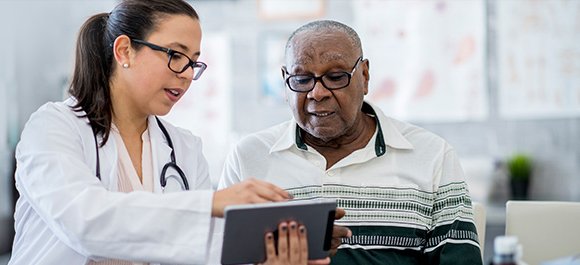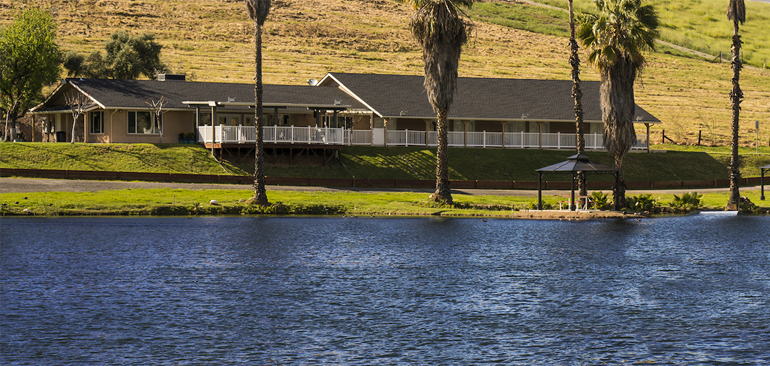Stroke Rehabilitation
A stroke can happen to anyone, anytime. Stroke leads to many types of disability, and recovery from a stroke can be quick or last years. When recovering from a stroke, you need a rehabilitation team that is skilled, patient, and creative with decades of experience treating the many different effects a stroke can have on your body and mind.
Sierra Care is a subacute rehabilitation center; we are focused on the care of patients who have been released from the hospital but require more medical care, therapies, and treatments during their recovery. If you or a loved one has experienced a stroke of any type, the services offered at Sierra Care will help you return to your life before your stroke.
Compassionate and Complete Care
The therapists and medical specialists working at Sierra Care are not only extremely skilled, but compassionate, kind, patient, and focused on your recovery. These traits are critical to your mental well-being and your physical recovery after a stroke. Everyone working at Sierra Care is dedicated to providing the best possible care during this extremely vulnerable time in your life.
What Happens During Stroke Rehabilitation?
Stroke rehabilitation is different for every patient. The focus of therapy is on a variety of exercises, tasks, and treatments provided by a large number of different therapists. The second part of stroke rehabilitation is focused on preventing future strokes and other medical conditions.
Therapy After Stroke
A stroke can affect any part of the body; because of this, almost all patients who have a stroke will have at least one meeting with each of the therapists listed below. If these therapists find an issue in their area of expertise, they will recommend multiple exercises and activities.
- Speech and swallowing therapy
- Occupational therapy
- Vocational therapy
- Range of motion exercises
- Strength and endurance training
- Balance, coordination, and mobility training
- Neurobehavioral therapy
- Cognitive behavioral therapy
It is difficult to predict how long therapy will be required and what therapies will be needed for any one patient. This is why a skilled team that communicates well and is focused on your care is so critical to stroke recovery. Each of these therapists is within the Sierra Care system, ensuring rapid and effective communication and sharing of medical records.
Preventing Further Medical Issues
Just as important as treating a stroke is preventing more strokes and other medical issues. Patients living with the effects of a stroke have a dramatically higher risk of diabetes, high blood pressure, high cholesterol, heart disease, and dementia. Ensuring that patients are connected with the following medical specialists is extremely important:
- Primary care
- Neurology
- Cardiology
- Geriatrics (for patients over 65)
- Nutritionists and dieticians
Just as communication between therapists is critical to therapy after stroke, communication between these medical specialists is also critical. Sierra Care has case managers and coordinates who ensure communication between all of these specialists, ensuring that nothing is missed, and helping you avoid future medical issues.
What are Some of the Effects of Stroke?
A stroke damages areas of the brain that control the body; they also damage the connections between these areas. Stroke rehabilitation creates new pathways within the brain to restore the connections between the undamaged areas of the brain. These connections are made by promoting repetitive motions, thought patterns, and sensations. Other therapies are focused on adapting to the damage that cannot be healed. Multiple studies have shown that specialized stroke rehabilitation dramatically improves the function of the body after a stroke.
Stroke can lead to a wide variety of effects, many of which can be dramatically improved with therapy. Some of the most common effects of a stroke that are often improved with therapy are:
- Weakness of one or more limbs
- Paralysis of one or more limbs
- Numbness and tingling of the limbs
- Coughing and choking while eating
- Difficulty speaking
- Difficulty understanding spoken and written words
- Chronic pain
Stages of Stroke Recovery
There are several stages of stroke recovery that are focused on recovery from the weakness and paralysis that are commonly seen after a stroke. These stages are:
- Flaccidity: “Floppiness” of an area of the body and a complete inability to control that area.
- Spasticity: The area that was previously flaccid becomes tense, and the muscles are constantly contracted.
- Return of complex movements: The ability to move the large muscles in the area improves. Specifically, the ability to coordinate multiple movements to perform an action.
- Resolution of spasticity: The tense and contracted nature of the area affected by the stroke resolves.
- Return of normal function: Control of the smaller muscles either improves or fully returns.
Each of these stages needs to be supervised by a therapist. There are several specific exercises that are extremely important to ensure that recovery continues. Since every area of the body is different, skilled and experienced physical and occupational therapists are critical.
What Types of Stroke Recovery Facilities Are Available?
There are different settings that the therapies for stroke recovery occur in. Almost all patients with a serious stroke spend time in the hospital, getting small amounts of daily physical therapy and visits from specialists to ensure that they are able to leave the hospital. After the stay in the hospital, there are several places that patients are sent to for additional therapy:
- Inpatient acute therapy facilities: Hospitals specialized in rehabilitation for patients who require several hours of therapy a day along with specialized medical care on a daily basis.
- Residential subacute facilities: Live-in facilities for patients that require daily therapy but have less complex medical needs and do not need to be in a hospital.
- Outpatient subacute facilities: The same as the live-in facilities above but for patients that require less frequent therapy or are able to commute daily to the therapy facility.
- Outpatient facilities: Ideal for patients who require therapy 2–3 days a week and for patients who are following up after therapy in one of the levels of care above.
Sierra care provides all of the services above with the exception of inpatient acute therapy, which is only provided by large specialized hospitals. Click this link for more details on our services and levels of care. If you or someone you know is recovering from a stroke and could benefit from our services, click this link, and we will contact you for more information.
For more information on the different levels of care and which would be most appropriate for you or your loved one, click this link to see our guide on the differences between the levels of care that are available after leaving the hospital.
Our Specialized and Experienced Caregivers
Sierra Care’s Patient Care Team

Creative and Compassionate Care
Stroke recovery takes patience, dedication, and creativity from both patients and their therapists. The staff at Sierra Care provides these things and more, helping you focus all your energy on your recovery. At Sierra Care, you will never have to worry about who is caring for you.

Beautiful and Modern Facilities
Sierra Care has facilities located throughout central California. Our modern, spacious, and clean facilities are located in beautiful areas with indoor and outdoor common areas. Environment is very important for both physical and mental health. Sierra Care’s facilities provide a perfect backdrop for your recovery.
The Very Best in Stroke Rehabilitation
Sierra Care’s stroke rehabilitation services work 24 hours a day, 7 days a week. Our teams of nurses, therapists, and doctors work as a team to speed your recovery and help with all steps of your recovery.
